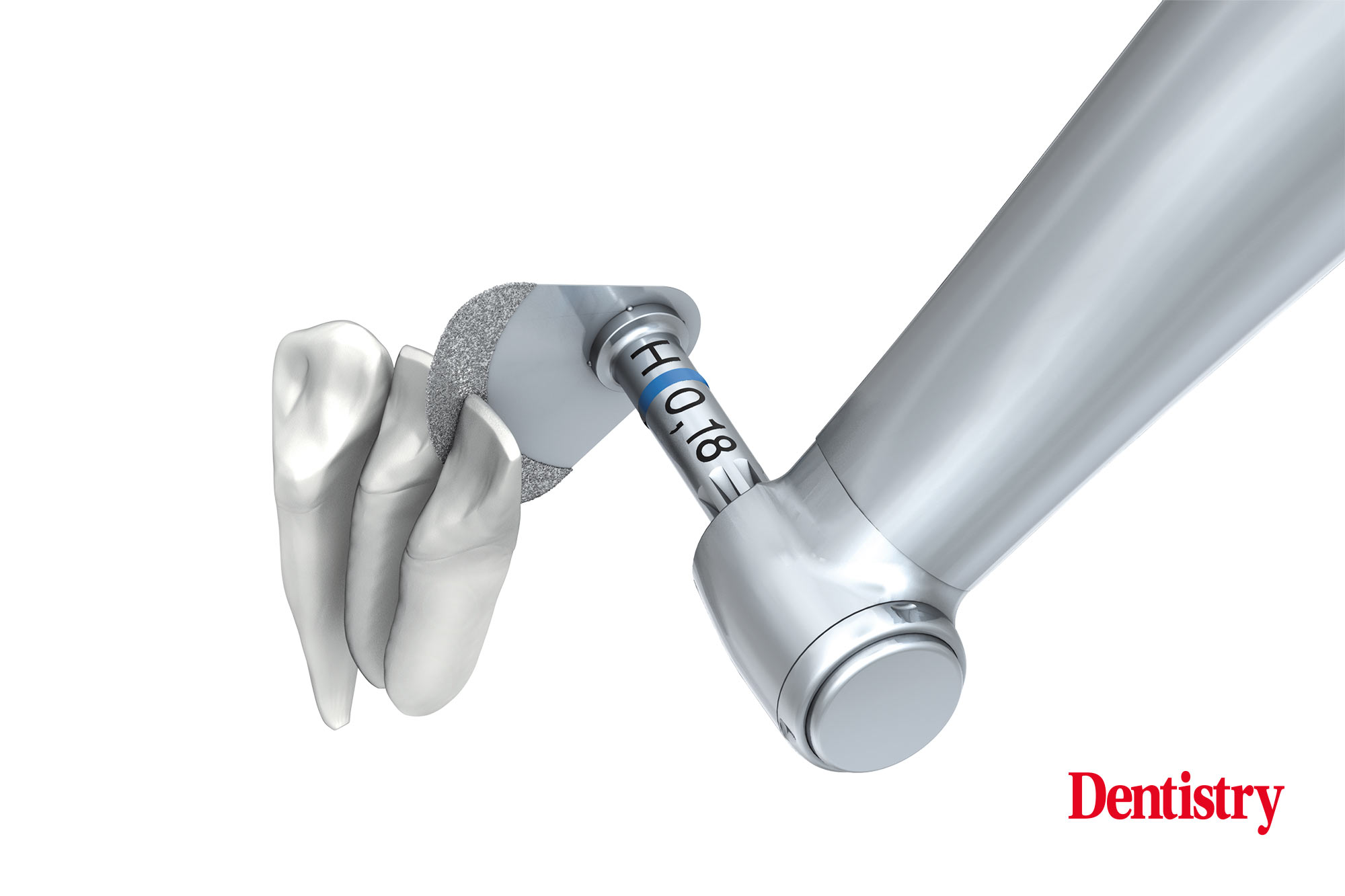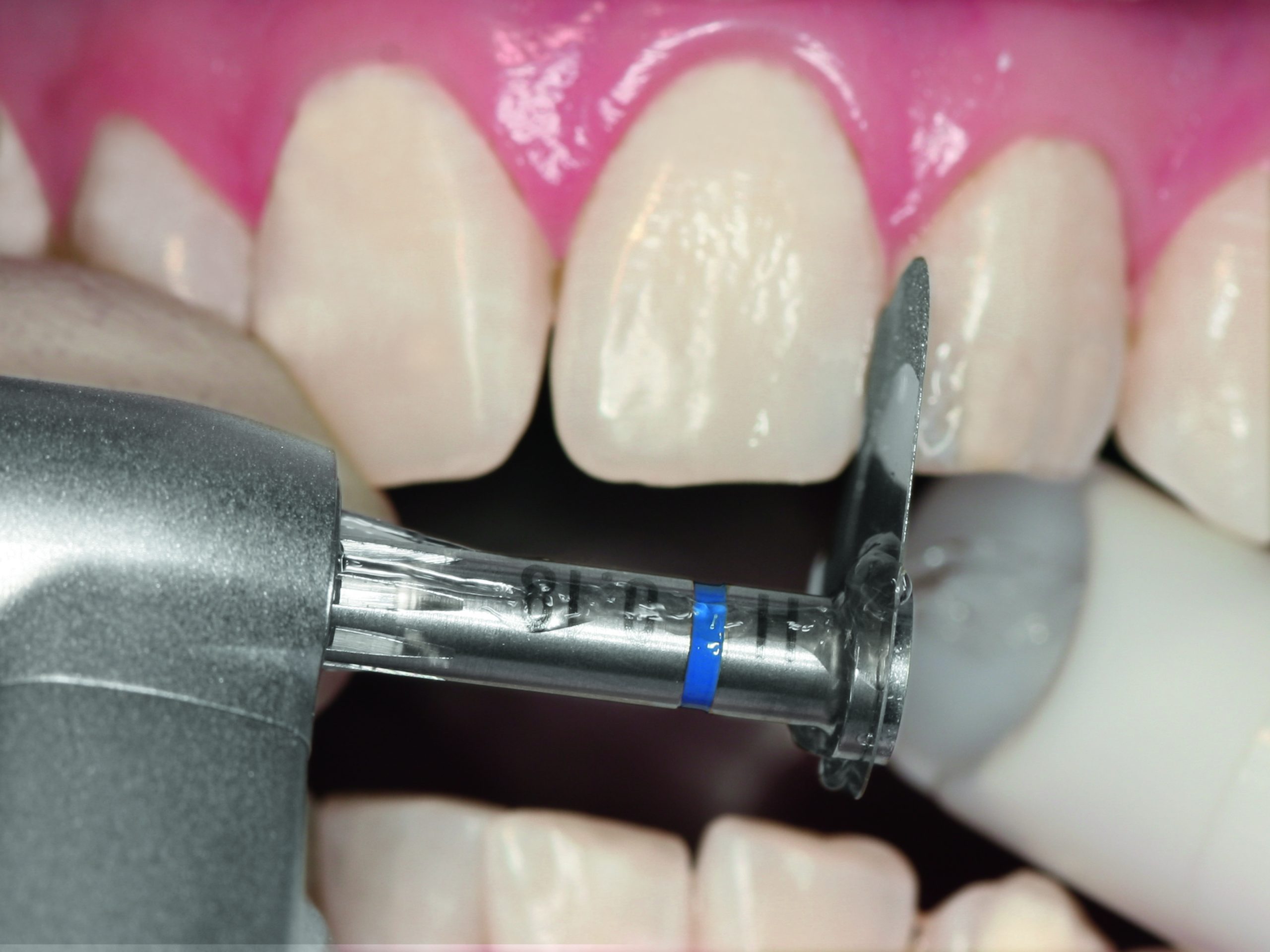
Why Komet instruments are perfect for efficient interproximal enamel reduction.
Some call it interproximal enamel reduction (IPR), others somewhat less elegantly slenderising or even stripping, which is in fact slightly misleading.
What is meant, however, is always the same: the removal of minor quantities of tooth enamel from mesial and distal surfaces.
Interproximal enamel reduction has become an indispensable part of successful orthodontic treatments. This applies in particular to adult patients undergoing therapies with fixed buccal or lingual appliances or aligners.
The main indication for IPR is crowded teeth, ie lack of space, in order to prevent the extraction of teeth before the treatment. IPR can also be used for reducing the so-called ‘black triangles’ between teeth which are often the result of loss of gingival attachment.
IPR can improve the unfavourable tooth shape by straightening the tooth walls so that they are parallel to the walls of the adjacent teeth, thus increasing the contact surface.
The teeth remain anchored in the bone bed and more favourable conditions are created to conceal the loss of the papillae.
How much tooth enamel can be removed?
As a general rule, the thickness of the tooth enamel is between 0.5 and two millimetres.
IPR starts at 0.1 millimetres at each side of the tooth and can increase to up to 0.5 mm without entering critical regions, ie where the thickness of the remaining enamel would fall below the minimum thickness required.
This depends on the type of tooth and the age of the patient.

What are the advantages of mechanical enamel reduction methods?
Manual methods, for example with diamond-coated strips, pose time and mechanical problems. Manual IPR is very time consuming, a time window of between five and 15 minutes just to remove a few micrometres of tooth structure is probably a realistic estimate.
This is very tiring for both the patient and the practitioner. So for everyday practice, where procedures should be efficiently organized, manual IPR is neither economical nor particularly pleasant. What’s more, manual methods tend to lack precision.
However, the most important advantage associated with the use of oscillating discs is probably that the risk of injury to soft tissue can be reduced or even prevented and that it is a very gentle method of reducing tooth enamel.
Komet’s solution for mechanical stripping is the orthodontic handpiece OS30 in combination with the patented OS segment disc – made for efficient interproximal enamel reduction!
This combination perfectly complements Komet’s comprehensive range of diamond coated orthodontic strips.
The oscillating Komet contra-angle and the patented Komet OS segment discs sparked off a revolution in orthodontics.
Professor Dr Jost-Brinkmann of the Charite Berlin provided his scientific advice during the development of this system which ensures greater safety during stripping.
The oscillating 60° segment discs have a swivel angle of only 30°. This allows space-saving work and ensures unobstructed vision onto the site, thus minimising the risk of injury to the soft tissue.
Advantages:
- Minimal risk of injury to the soft tissue due to oscillating operation
- Optimal view and excellent removal of debris thanks to the honeycomb design
- Ring and laser markings on the shank for easier identification.


